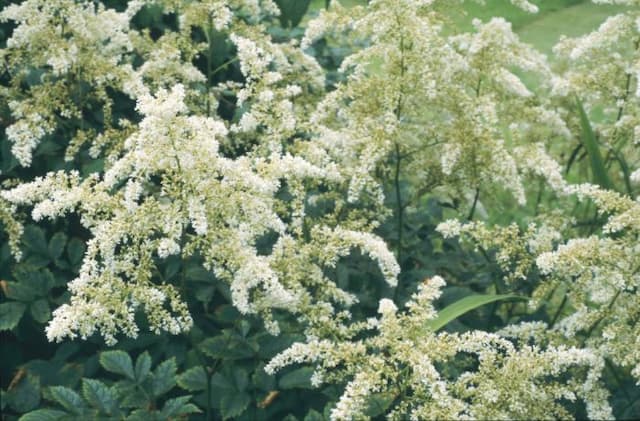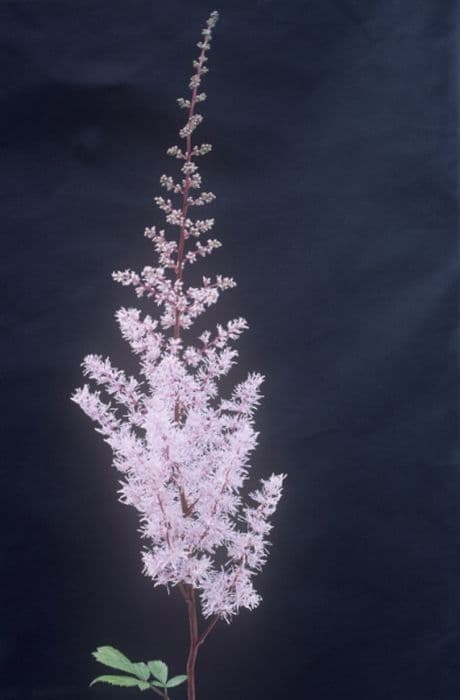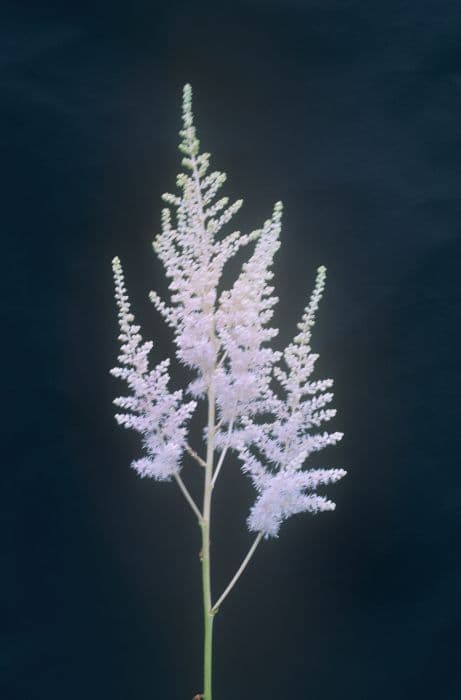Elephant's Ears Bergenia 'Bressingham Ruby'

ABOUT
Bressingham Ruby is a vibrant and attractive perennial plant known for its striking foliage and flowers. The leaves of Bressingham Ruby are large, glossy, and rounded, presenting a rich, leathery texture. They emerge in a bright green hue and then transform into a captivating bronze-red color, especially during the colder months, adding winter interest. The foliage creates an elegant low-lying mound, giving a lush, dense appearance to the garden. In addition to its colorful foliage, Bressingham Ruby is adorned with clusters of bell-shaped flowers. These blossoms are typically found in a bold, ruby-red shade, hence the name 'Bressingham Ruby'. The flowers create a delightful contrast with the leaves and stand atop sturdy stems, rising above the foliage to catch the eye. These blooms are admired for their ornamental value and can bring a burst of color to any landscape. Overall, Bressingham Ruby exudes charm and can serve as an excellent ground cover or addition to rock gardens, borders, and container plantings, offering year-round visual interest.
About this plant
 Names
NamesSynonyms
Pigsqueak, Heartleaf Bergenia, Elephant's Ears, Leather Bergenia, Megasea
Common names
Bergenia 'Bressingham Ruby'.
 Toxicity
ToxicityTo humans
Bergenia 'Bressingham Ruby', commonly known as Bergenia, is not typically considered toxic to humans. There is little information suggesting serious toxicity or poisoning upon ingestion. However, as with many plants, it's possible to have a mild reaction or stomach upset if ingested in large quantities. It is important to consider that individual sensitivities can vary and some people might experience more pronounced reactions.
To pets
Bergenia, while not widely recognized as a highly toxic plant to pets, can still cause some discomfort if ingested. Pets, such as cats and dogs, might experience mild gastrointestinal upset including symptoms like vomiting or diarrhea if they consume parts of the Bergenia plant. However, significant toxicity or severe poisoning is relatively uncommon. It's always wise to discourage pets from nibbling on any houseplants and to keep an eye out for any adverse reactions.
 Characteristics
CharacteristicsLife cycle
Perennials
Foliage type
Evergreen
Color of leaves
Green
Flower color
Ruby-red
Height
1 foot (30 cm)
Spread
1 foot (30 cm)
Plant type
Herb
Hardiness zones
4
Native area
Asia
Benefits
 General Benefits
General Benefits- Year-Round Interest: Bergenia 'Bressingham Ruby' offers attractive foliage throughout the year, turning a striking ruby red in the fall and winter.
- Drought Tolerant: Once established, this plant has good drought tolerance, making it suitable for regions with low rainfall.
- Easy to Grow: It thrives in a range of soil types and doesn't require much maintenance, making it a good choice for novice gardeners.
- Attracts Wildlife: The flowers of Bressingham Ruby provide nectar for pollinators such as bees and butterflies, enhancing biodiversity.
- Ground Cover: Its dense growth habit suppresses weeds and helps to stabilize the soil, preventing erosion.
- Cold Hardy: The plant is tolerant of cold temperatures and can survive in colder climates, making it versatile for various landscapes.
- Shade Tolerant: It can grow in full sun to part shade, offering flexibility for gardeners with shaded areas.
- Seasonal Blooms: It produces pink to ruby red flowers in the spring, adding seasonal color to gardens.
- Edging and Borders: Because of its compact size and evergreen leaves, it’s ideal for use in garden edging and borders.
 Medical Properties
Medical PropertiesThis plant is not used for medical purposes.
 Air-purifying Qualities
Air-purifying QualitiesThis plant is not specifically known for air purifying qualities.
 Other Uses
Other Uses- Bergenia 'Bressingham Ruby' leaves can provide a natural dye; the deep red and pink hues of the foliage can be used to dye fabric or paper in craft projects.
- The tough leaves can be used as makeshift sandpaper for smoothing rough edges in woodcraft or as a natural abrasive in various DIY projects.
- During winter, the evergreen leaves can serve as a visual interest in frosty gardens, providing a splash of color when most plants are dormant.
- The leaves can be used to line hanging baskets, helping to retain moisture and create an attractive base for other flowers.
- The plant can be used in terrariums or fairy gardens, bringing a touch of the outdoors inside with its miniature landscape aesthetic.
- Creative floral arrangements can incorporate Bergenia 'Bressingham Ruby' for its seasonal color variation and foliage texture.
- The plant's clumping nature can be used to prevent soil erosion on slopes or banks in landscape design.
- As a photography subject, its vibrant foliage and flowers can be the focal point in garden photography and art.
- Its leaves can serve as natural mulch, providing a protective layer that helps to retain soil moisture and suppress weeds when decomposed.
- When used in a sensory garden, the plant's leathery leaves provide a unique tactile experience for visitors.
Interesting Facts
 Feng Shui
Feng ShuiThe Bergenia is not used in Feng Shui practice.
 Zodiac Sign Compitability
Zodiac Sign CompitabilityThe Bergenia is not used in astrology practice.
 Plant Symbolism
Plant Symbolism- Endurance: Bergenia 'Bressingham Ruby', often referred to as Elephant's Ears due to its large, rounded leaves, is known for its hardiness and ability to withstand challenging conditions, symbolizing endurance and resilience.
- Protection: With its thick, leathery foliage, Elephant's Ears can symbolize protection and shelter, qualities often highlighted by its use in gardens as ground cover, offering a protective layer to the soil.
- Adaptability: This plant's ability to thrive in varying light conditions from full sun to shade signifies adaptability and flexibility in life.
- Transformation: The transformation of the leaves' color throughout the seasons, from a deep green to a rich ruby red, can symbolize change and the embrace of life's cycles.
 Water
WaterElephant's Ears should be watered thoroughly, allowing the soil to become moderately dry between waterings. Generally, this means watering every week, but frequency may need to increase during hot, dry periods, possibly to twice per week. Use approximately 1 gallon of water per plant for each watering session. Adjust the amount based on the plant's size and the environmental conditions, ensuring the water penetrates the soil to reach the root zone without leaving the soil waterlogged.
 Light
LightElephant's Ears prefer partial shade but can also tolerate full sun in cooler climates. The ideal spot is one where morning sunlight can reach the plant, followed by dappled or partial shade during the intense afternoon heat. Too much direct, hot sun can scorch the leaves, so protection during peak sunshine hours is beneficial.
 Temperature
TemperatureElephant's Ears thrive in a temperature range of around 60 to 75 degrees Fahrenheit but can tolerate temperatures as low as 20 degrees and as high as 85 degrees. The ideal temperature range supports the health and vibrant color of the foliage. Protection from frost is necessary, as temperatures below 20 degrees can be harmful to the plant.
 Pruning
PruningElephant's Ears benefit from pruning primarily to remove old, damaged, or spent leaves, which promotes healthier growth and improves the plant's appearance. Pruning is best done in late winter or early spring before new growth begins. Cut back any damaged foliage at the base, and tidy up the plant as needed to maintain its shape and size.
 Cleaning
CleaningAs needed
 Soil
SoilElephant's Ears prefer well-draining soil rich in organic matter with a pH range of 5.5 to 7.5. A mix of loam, peat, and sharp sand is ideal.
 Repotting
RepottingElephant's Ears should be repotted every 2-3 years to refresh the soil and accommodate root growth.
 Humidity & Misting
Humidity & MistingElephant's Ears thrive in moderate to high humidity levels but are adaptable to average household humidity.
 Suitable locations
Suitable locationsIndoor
Keep in bright, indirect light and maintain moist soil.
Outdoor
Plant in part shade and water regularly during dry spells.
Hardiness zone
Elephant's Ears are hardy in USDA zones 3-8.
 Life cycle
Life cycleThe life cycle of Bergenia 'Bressingham Ruby', commonly known as Bressingham Ruby Bergenia, begins with germination, where the seeds sprout in moist soil in the spring after a period of cold stratification. After sprouting, the seedlings establish a rosette of leaves near the ground level and, over time, develop a robust root system. As the plant matures, it forms evergreen, leathery leaves that persist throughout the seasons, leading to a clump-forming habit. In the spring, Bressingham Ruby Bergenia produces striking magenta-pink flower spikes that rise above the foliage, initiating the reproductive stage. After flowering, the plant sets seed, which can be dispersed for propagation, though many gardeners prefer to propagate through division of the clumps. The plant gradually develops larger clumps through vegetative growth and may require division every few years to rejuvenate and prevent overcrowding.
 Propogation
PropogationPropogation time
Spring to summer
Bergenia 'Bressingham Ruby', commonly known as Bressingham Ruby Bergenia, is typically propagated through division, a method best performed in the early spring or fall when the plant is not in active growth. To propagate by division, gardeners dig up the entire plant, taking care not to damage the root ball. Using a sharp knife or spade, they then divide the root mass into smaller sections, ensuring each section has at least one growth point or bud. The derived sections are then replanted in well-prepared soil, spaced approximately 12 inches (about 30 cm) apart to allow room for growth. Adequate watering after replanting ensures that the new plants establish themselves in their new location. This method of propagation allows for the quick production of new plants that are genetically identical to the parent plant, which typically bloom within a year or two.









